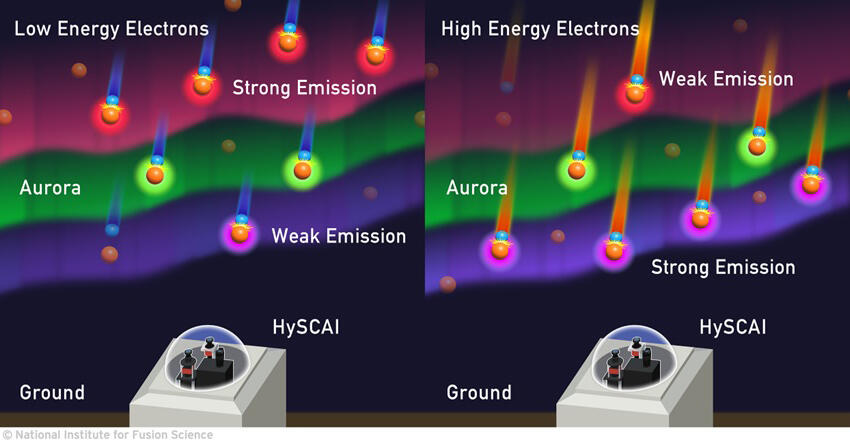Assistant Professor Mikiro Yoshinuma and Project Professor Katsumi Ida of the National Institute for Fusion Science (NIFS) and Professor Yusuke Ebihara of the Research Institute for Sustainable Humanosphere at Kyoto University, announced on August 2 that they successfully observed auroras for the first time using a hyperspectral camera. Observation images are available on the NIFS website (https://projects.nifs.ac.jp/aurora/en/repository.html). The developed hyperspectral camera is suitable for aurora research because it is capable of fine spectroscopy and captures light based on wavelengths. On the contrary, conventional cameras only capture images in three segments: red, green, and blue. The results were published in Earth, Planets and Space on August 2.

Provided by the National Institute for Fusion Science
The "Hyperspectral Camera for Aurora Observation (HySCAI)" was developed under the "Aurora Observation Project" of NIFS. The HySCAI is an observation system that uses spectral measurement systems and plasma observation techniques to investigate the detailed color of auroras. It was installed in Kiruna, Sweden (67°N), in May 2023 and began observations in September of the same year. Data were remotely acquired from Japan, and from it, the researchers succeeded in breaking down the two-dimensional images of auroras into light with different wavelengths.
Auroras are natural luminous phenomena caused by interactions between electrons precipitating from the sky and the upper atmosphere. Most observed light consists of emission lines of neutral or ionized nitrogen and oxygen atoms and molecular emission bands. Its color is determined by the energy level transitions, molecular vibrations, and molecular rotations. However, how the characteristic colors of different aurora types emerge in different emission processes was not well understood yet.
The research group was working on the development of a hyperspectral camera since 2018 because spectral observation, which involves breaking down the light, was necessary to understand the colors of auroras. The results show that when the electrons have low energy and speed, they emit strong red light at high altitudes. Meanwhile, when they have high energy and speed, they reach low altitudes and emit strong green and purple light. Because different elements produce light at different altitudes, the researchers were able to successfully observe differences in distribution by color.
Ebihara said, "Through the integration of different fields, we were able to look closer into the emission mechanism of auroras, which are plasma phenomena. The color of auroras is determined by specific wavelengths emitted by oxygen and nitrogen atoms in the atmosphere. However, the details of the emission mechanism are still unknown" hoping to clarify the mechanism of the pink-colored aurora.
The developed observation system can estimate the energy (velocity) of electrons. Further, it is expected to help solving important problems related to the distribution of precipitating electrons, the relationship of the electrons with the color of auroras, and the emission mechanism of auroras.
Journal Information
Publication: Earth, Planets and Space
Title: Development of hyperspectral camera for auroral imaging (HySCAI)
DOI: 10.1186/s40623-024-02039-y
This article has been translated by JST with permission from The Science News Ltd. (https://sci-news.co.jp/). Unauthorized reproduction of the article and photographs is prohibited.




